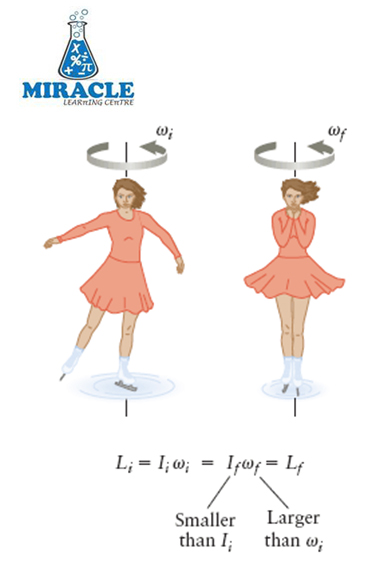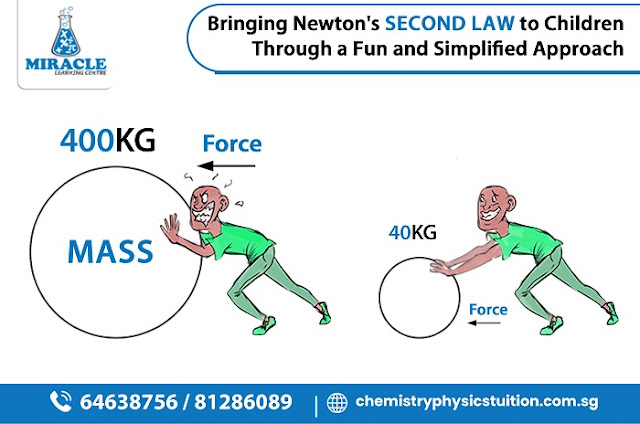In-Depth Insights into Torque and Angular Momentum
In the fascinating world of physics, rotational motion takes center stage, offering a wealth of insights into the behaviour of objects as they spin and twirl around an axis. Two indispensable concepts in this realm are torque and angular momentum. These principles play a pivotal role in explaining how objects rotate and find applications in countless aspects of our daily lives. In this informative exploration, we will delve into the depths of torque and angular momentum, shedding light on their definitions, properties, mathematical formulations, real-world applications, and the profound role they play in our understanding of the universe's dynamics. At last, we will explore the invaluable role of physics tuition in overcoming these challenges and recommend it as an effective solution for mastering these fundamental physics concepts.
The Basics of Torque and Angular Momentum
Torque is a fundamental concept in physics, representing the rotational equivalent of force. It is the measure of the tendency of a force to rotate an object around an axis or pivot point. Torque, denoted by τ (tau), is calculated by multiplying the force (F) applied to an object by the distance (r) from the axis of rotation to the point where the force is applied. Mathematically, it can be expressed as τ = F × r.
Understanding torque is vital in various aspects of physics, particularly in mechanics and engineering. Imagine trying to open a door without pushing or pulling it at the right distance from the hinge. Torque is the reason why some doors are easier to open than others, and this practical example demonstrates the importance of torque in our everyday lives.
Angular momentum, on the other hand, is a property of rotating objects. It is defined as the product of an object's moment of inertia (I) and its angular velocity (ω) and is often represented by the symbol L (angular momentum = I × ω). Angular momentum plays a crucial role in understanding the behaviour of celestial bodies, such as planets and stars, as well as subatomic particles in quantum mechanics.
Conservation of Angular Momentum
One of the most intriguing aspects of angular momentum is its conservation. Similar to the conservation of linear momentum, angular momentum remains constant when no external torques act on an isolated system. This principle holds profound implications for understanding various natural phenomena, such as the graceful spins of figure skaters or the majestic motion of celestial bodies in space.
Relationship between Torque and Angular Momentum
The relationship between angular momentum and torque is described by a fundamental principle in physics known as the angular momentum principle, which is analogous to the linear momentum principle (Newton's second law) for linear motion. In simple terms, angular momentum (L) is related to torque (τ) in the following way:
τ = ΔL/Δt
Where:
τ is the torque applied to an object.
ΔL is the change in angular momentum.
Δt is the time over which the torque is applied.
Mathematically, angular momentum (L) is defined as the cross product of the object's moment of inertia (I) and its angular velocity (ω):
L = I * ω
So, if you want to calculate the change in angular momentum (ΔL) due to a torque (τ) applied for a certain period of time (Δt), you can use the formula:
ΔL = τ * Δt
This equation shows that the change in angular momentum is directly proportional to the torque applied and the duration over which the torque is applied. It also highlights the conservation of angular momentum. In the absence of external torques, the total angular momentum of a closed system remains constant.
Applications of Torque and Angular Momentum
The applications of torque extend far beyond opening doors. In engineering, torque is essential for designing machines and mechanisms, including engines, gears, and pulleys. It ensures that these systems function efficiently and safely.
Angular momentum, on the other hand, finds applications in fields like astronomy, where it helps explain the rotational motion of celestial bodies. For instance, the conservation of angular momentum explains why a figure skater spins faster when they bring their arms closer to their body, highlighting the real-world implications of this concept.
Throughout history, breakthroughs related to torque and angular momentum have revolutionized our understanding of the physical world. For example, the development of the water wheel in ancient times, which relied on torque, enabled the efficient harnessing of water energy for various industrial processes.
Challenges in Understanding Torque and Angular Momentum
Despite the importance and real-world applications of torque and angular momentum, many students find these concepts intimidating and difficult to comprehend. The challenges arise from a combination of factors, including the abstract nature of these concepts, the need for a strong foundation in mathematics, and the lack of engaging educational resources.
One common misconception students have about torque is that it is solely related to force. In reality, torque depends not only on force but also on the distance from the pivot point where the force is applied. This misunderstanding often leads to incorrect problem-solving approaches.
Angular momentum, too, poses challenges due to its abstract nature and complex mathematical expressions. Students often struggle to visualize the concept and apply it to different situations, hindering their ability to solve physics problems effectively.
The Role of Physics Tuition in Overcoming Challenges
Physics tuition in Singapore is an invaluable resource for students seeking to master challenging concepts like torque and angular momentum. Expert physics tutors can provide personalized guidance, clarify doubts, and offer practical examples that make these concepts more accessible.
With the guidance of a qualified physics tutor, students can bridge the gap between theory and application. Tutors can help students understand the intricacies of torque and angular momentum by breaking down complex problems into manageable steps, providing intuitive explanations, and offering real-life examples that relate to their interests.
Success stories abound among students who have turned to physics tuition for assistance. Many have experienced significant improvements in their understanding of these concepts, leading to improved grades and increased confidence in tackling physics-related challenges.
Conclusion
In conclusion, torque and angular momentum are fundamental concepts in physics with wide-ranging applications in various fields. While these concepts can be challenging to understand, seeking quality physics tuition is a highly effective way to overcome these challenges and excel in physics.
So, if you find yourself struggling with the intricacies of torque and angular momentum in physics, don't hesitate to explore physics tuition options. It's a valuable investment in your education that can make all the difference in mastering these complex concepts and thriving in your physics studies. Seek quality physics tuition today and embark on a journey of discovery and understanding in the fascinating world of physics.





Comments
Post a Comment